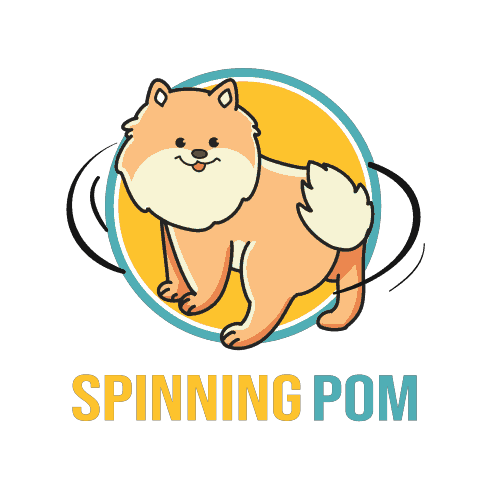Pomeranians are one of the several dog breeds that commonly suffer from knee joint issues. When the bone is malformed or an injury to the kneecap occurs, the kneecap slips out of place and causes pain.
This health condition is called a luxating patella and, when your Pomeranian is given surgery, it’s good to know your Pomeranian’s luxating patella recovery timeline. One of the more typical treatment plans for this condition includes a surgical solution, so owners often want to know the luxating patella recovery timeline.
Post-Surgery Luxating Patella Recovery Timeline
Immediately after surgery, most Pomeranians will show that they feel some tenderness and they will self-limit up to a point. Some will immediately feel some improvement or will just be unable to contain their naturally exuberant personalities.
It is critical that any exercise restrictions suggested by the surgeon are strictly followed to ensure a speedy luxating patella recovery timeline. When your Pomeranian comes home, you will want to follow these steps:
- Take your Pomeranian on very slow walks on a leash and begin with only 5 minutes at a time. If your Pomeranian shows signs of strain, stop immediately and try again after a good rest period. If there are any signs of continued pain on these very short walks, return to your vet right away for a re-check. Otherwise, you can begin to increase the walks as your dog seems healthy enough to manage it.
- Carry your Pomeranian up and down all stairs in the first days after surgery. If it is wet or icy outside and there is a chance of slipping, also carry them to the spot for potty breaks and discourage him or her from moving around on the slippery surface.
- Apply cold compresses to the hip right over the knee incision either 3-4 times a day or as much as your veterinarian recommends. The ideal time to do this is right after the exercise times since there may be an increase in inflammation after those first walks. Frozen peas work fine as a compress, but if these are still too solid for your Pomeranian, you can purchase flexible ice packs that remain soft even while ice cold.
Now I’ll walk you through the likely weekly progression of your Pomeranian’s luxating patella recovery timeline. While your Pomeranian’s timeline may not match perfectly with this, the progression will be similar nonetheless.
After the First Week
This is the first stage in your Pomeranian’s luxating patella recovery timeline. If all is going well, you can move on to some progressive steps in the recovery process. Increase the walking times if your Pomeranian is doing well, up to 10 minutes or even a bit more. You can probably discontinue the cold packs after the first week unless you see obvious swelling or your veterinarian specifically recommends it.
Begin to apply moist heat using a commercial product to apply the heat, and make sure that the temperature on the device you choose isn’t too hot for a small dog. Humans are often advised to make a rice bag and heat it in the microwave to produce moist heat, but humans can also speak up if the temperature is too high. Whatever product you choose, it should be warm but not hot to the touch. If you just aren’t sure, a washcloth heated in lukewarm water can be used for the gentlest option.
Unless your vet suggests otherwise, apply your heat option just before the exercise period to increase the flexibility of the healing joints.
Two to Three Weeks Post-Surgery
This is the second stage in your Pomeranian’s luxating patella recovery timeline. In many cases, your veterinarian will be ready to see your Pomeranian and evaluate his or her condition at this stage.
As long as your Pomeranian shows no pain when you do this, begin very gentle massages to the muscles around the hip, thigh, and leg. Slow kneading will help relieve pain and decrease muscle tension. In the beginning, keep the massage periods light and short.
You will also want to begin helping your Pomeranian increase their range of motion by doing home physical therapy. These first attempts should be slow and if they show any sign of pain, stop immediately. To begin, grasp the limb wherever the Pomeranian tolerates it (sometimes the food or the lower leg) and very slowly help straighten and stretch the leg. Guide the leg back into a relaxed position.
If your Pomeranian pulls away and it seems to be due to pain, wait until your next vet checkup to go much further with this. If the pulling seems to be just discomfort with your touch, you can start with stroking until your Pomeranian relaxes in your lap and then work up to a small stretch.
Most Pomeranians love attention and will look forward to the interaction as they feel safe. Continue to do massage and exercise and then work on the stretching exercises. As your Pomeranian becomes more comfortable, increase how much tension you put on the leg as long as there are no signs of pain.
These passive range-of-motion exercises will move on to deeper stretches. Lay your Pomeranian on their side and slowly extend their leg. Flex the ankle, the knee, and the hip. Start with just a few repetitions and work up to 10 repetitions 2-3 times a day.
Four to Six Weeks Post Surgery
This is the third stage in your Pomeranian’s luxating patella recovery timeline. You’ll now be ready to progress to a more complex walk. Put your Pomeranian on a leash and start out with walking in large circles. Large circles are easier than tight ones, to begin with, as they require less flexing.
Once your Pomeranian is accustomed to circles, try a slow figure eight pattern. If they show some strain or discomfort at first, increase the size of the figure eight to reduce the tension on the muscles, ligaments, and joints.
Have your Pomeranian sit and stand multiple times during the exercise period. This isn’t an obedience exercise, it’s just for the practice, so the sit and stand don’t need to be perfect.
Continue to use moist heat as you move through the fourth, fifth, and sixth weeks. You will usually see your veterinarian for an evaluation at some point during these weeks and you can ask for advice on any concerns.
Six to Eight Weeks Post-Surgery
This is the fourth stage of your Pomeranian’s luxating patella recovery timeline. Walks should now be progressing to 20 minutes or more as long as they show solid progress. Since Pomeranians are small dogs, most owners take only short walks even before the dog is diagnosed. If you normally walked 30 minutes or more, it’s usually not too soon to move to 30 minutes in the seventh or eighth week. If you weren’t walking that long before, there may be no need to do that much with small breed dogs.
Try to do your walks at least twice a day. If you were walking three times a day before surgery, it is fine to work up to this point or more as long as your Pomeranian is comfortable.
Try to incorporate some inclines and declines into many of your walks at this point. You will want to start with gentle ones at first, so think about slopes instead of steps or stairs. You really want to avoid steps and stairs entirely and carry your Pomeranian up and down until your veterinarian considers your Pomeranian fully recovered.
Beyond Eight Weeks
This is the fifth and final stage of your Pomeranian’s luxating patella recovery timeline. Have your Pomeranian evaluated at around the nine-week mark so your vet can suggest anything further for your luxating patella recovery timeline.
Some veterinarians will be ready to release your Pomeranian to do many more play activities with the exception of high impact. Running hard should be avoided until your vet clears your Pomeranian for completely normal activity, but by the ninth or tenth week, you can usually resume a much more normal routine.





